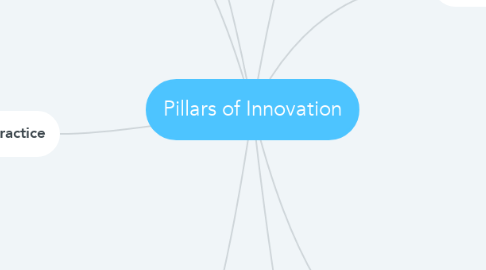Pillars of Innovation
作者:Adam French

1. References
2. Policy
2.1. Policy in innovation means cultivation of successful technologies and business models by the government. Good innovation policy is flexible, dynamic, and forward thinking.
3. Evidence-Based Practice
3.1. Evidence-Based practice is a reliance on statistics from previous and similar attempts of whatever you are trying to achieve. It defines the consideration of facts, statistics, and case studies in developing any new product, service, work process, or business model.
3.2. What it means to me: Evidence-Based Practice means reliance on research when making major decisions. For Example, if a nurse was faced with a patient that has a certain symptoms and the doctor is out at the moment, she could refer to a "best practices" manual that's compiled with the best actions to take when confronted with certain symptoms. This manual and the research behind it's creation is a good example of evidence based practice.
4. Technology
4.1. Technology means the application of science in the development of new things. An example of technology in health care is the development of a handheld sensor that can measure your antioxidant levels and recommend diet augmentations based on those levels
4.2. To me, Technology in innovation means the application of scientific advancement and knowledge to products or services. It means developing new types of sensors that can measure antioxidant levels in you skin. It also means the integration of these sensors into a larger product that serves the public. Technology and it's advancement occur at many layers as demonstrated in the relationship between micro-transistors and the smartphone.
5. Innovation Process
5.1. A sequence of Ideation based off diversity of thought and interdisciplinary collaboration/merging
5.2. To me, The innovation process means a process of rapid iteration with every aspect of idea development involved at every step. For example, a consumer, an engineer, and a financial executive collaborating on the design of a product at the same time .
6. Leadership
6.1. My Definition: Leadership in innovation Is the management of new ideas. Leadership usually entails configuring the collaborative structure of the talent within their organization in a way that emphasizes individual's skills.
6.2. What it Means to Me: To me, leadership in innovation means valuing ideas from "lower ranking" individuals and incentivizing creativity. It means enabling and empowering other people in the organization. This defines leadership for me because the best leaders know where they lack and empower the right people to fill the gaps in expertise. If done on a organization-wide scale, this can lead to increased productivity and job satisfaction across the board.
7. FInance
7.1. Finance in innovation encompasses the movement of money and how it fuels or obstructs innovation. It determines the resources that innovation has access to.
7.2. Finance in innovation to me means innovation in finance. The development of the modern venture capital ecosystem was itself an innovation in funding idealistic young people to help them change the world. In the health care system, finance as it stands acts as a wrench in the workings. There are misaligned incentives and poorly designed/fragmented market-based health care financing entities that drive up costs at every step.
8. Outcomes
8.1. Outcomes of innovation in systems and products are simplification, accessibility to all users, and increased efficiency.
8.2. Outcomes of innovation to me means the optimization of a system or product for the people using it. For the health care system this means less cost and more empowerment for individuals to take control of their health; instead of fancy gadgets to cure every disease, simplifying and using "upstream thinking" to find the source of widespread issues like obesity, diabetes, and heart disease.


